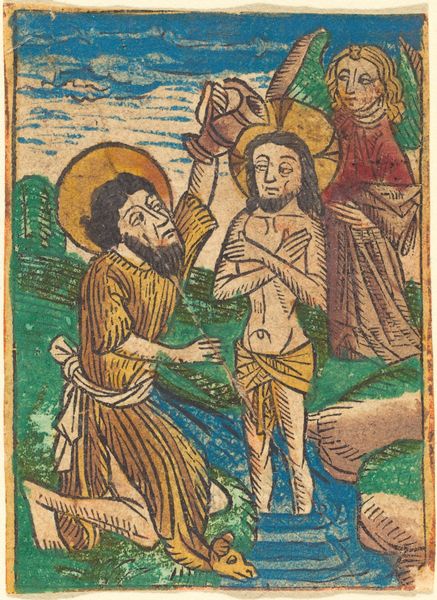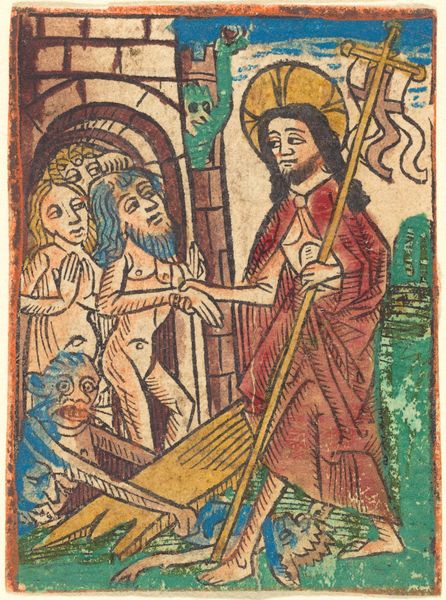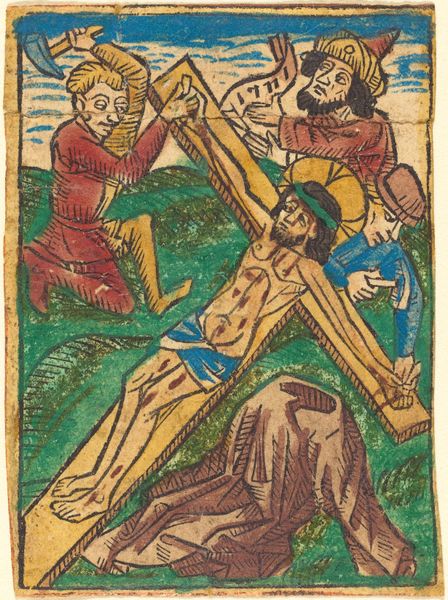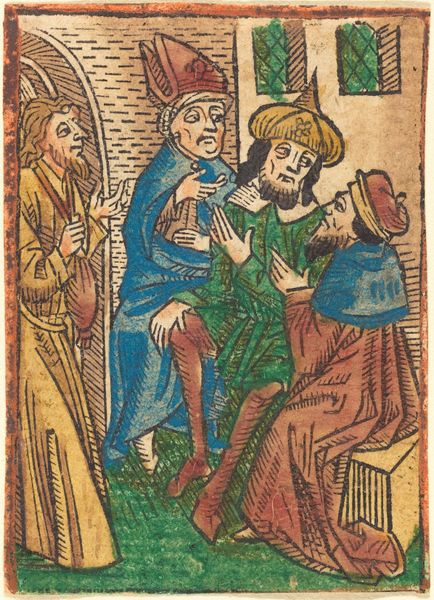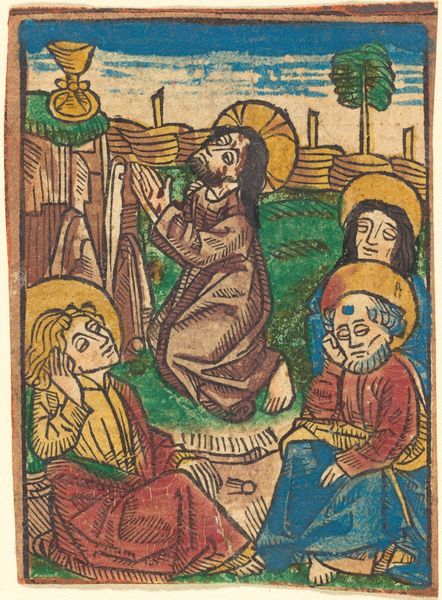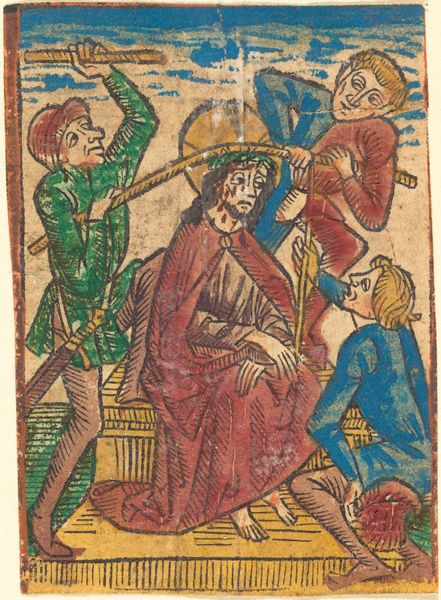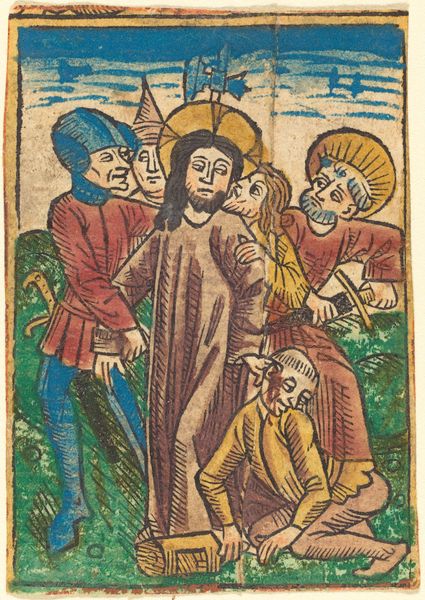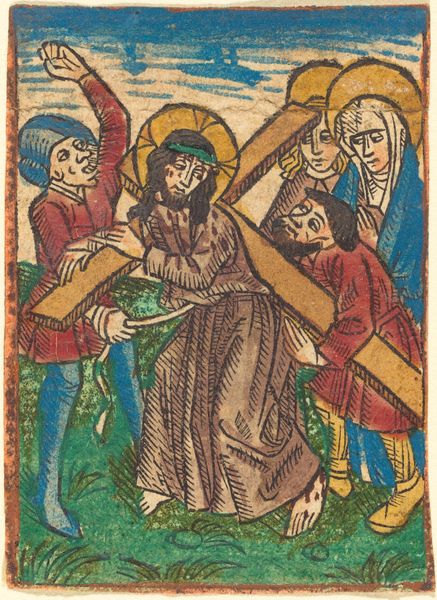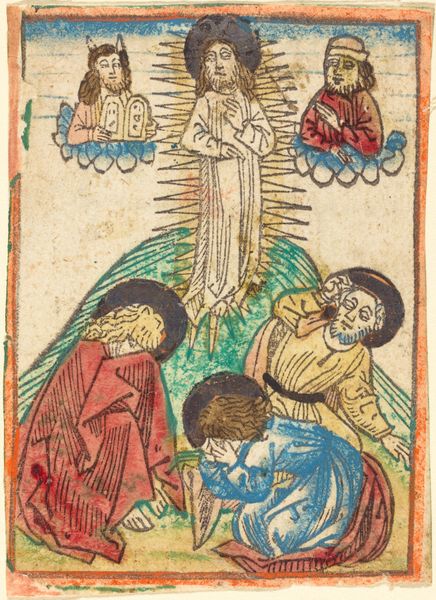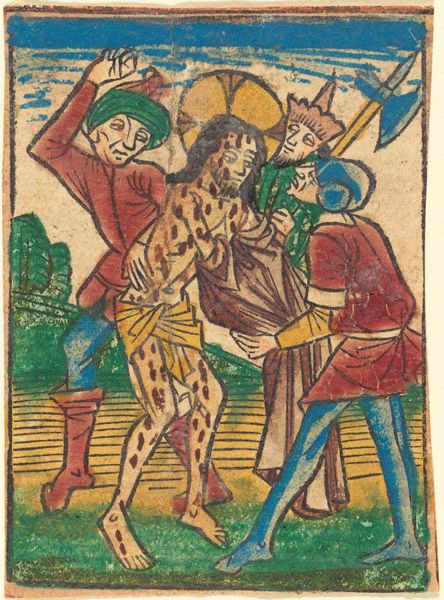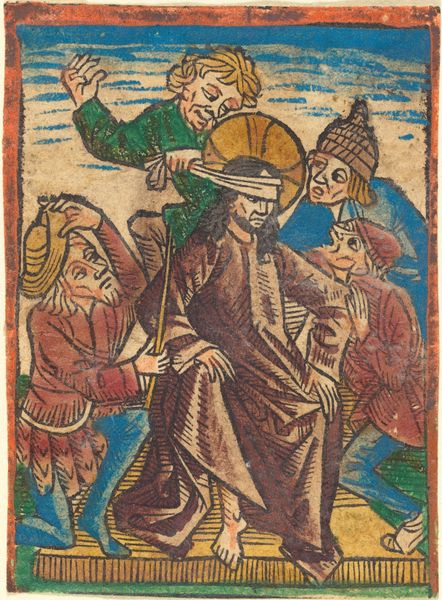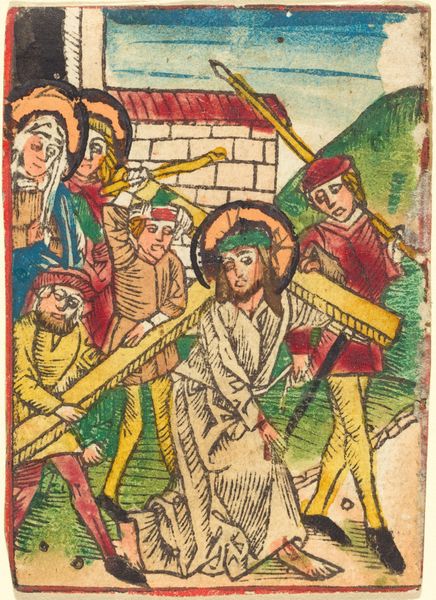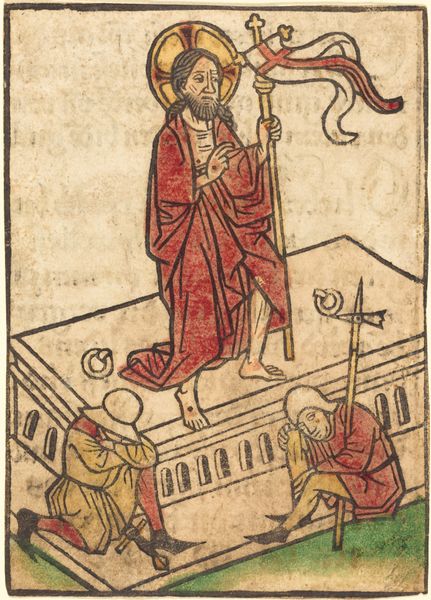
#
medieval
#
narrative-art
# print
#
figuration
#
naive art
#
northern-renaissance
Copyright: National Gallery of Art: CC0 1.0
This image of ‘The Resurrection’ was made anonymously, likely during the late medieval period, using woodcut techniques. The process begins with carving a design into a block of wood. Ink is then applied to the raised surfaces, and paper pressed against the block to transfer the image. Here, the lines are quite bold, suggesting the use of simple tools and a direct approach to carving. The material qualities of wood – its grain and density – would have influenced the final print, adding texture and character. Hand-coloring, visible in the vibrant robes and landscape, adds another layer of craft. The nature of the printmaking process also allowed for the relatively quick reproduction of images, making them accessible to a wider audience, and allowing a greater distribution of religious ideas. Considering the labour involved, from the woodcarver to the colourist, this print is a testament to the skilled hands and collaborative effort behind even seemingly simple works of art. It reminds us that all images, regardless of their perceived status, are products of human ingenuity and material processes.
Comments
No comments
Be the first to comment and join the conversation on the ultimate creative platform.
